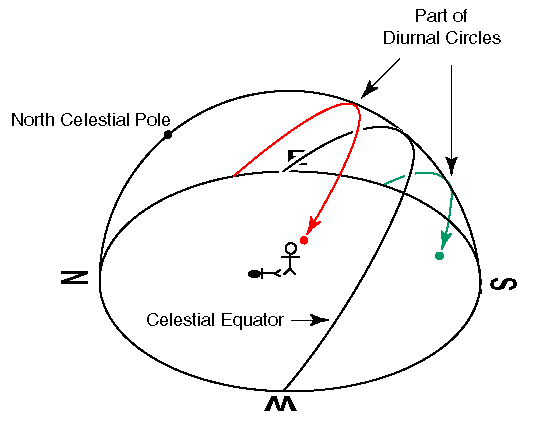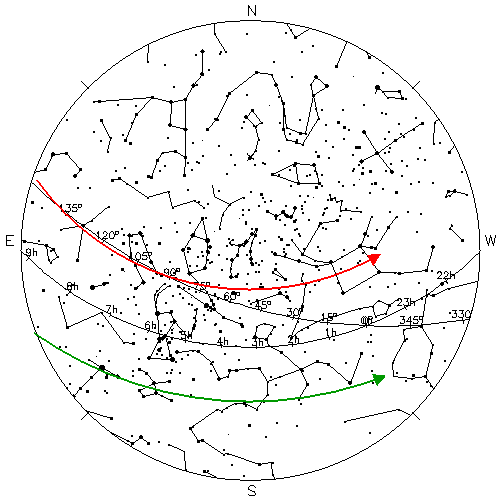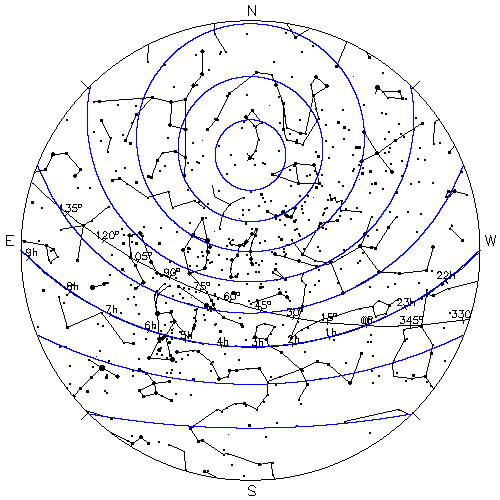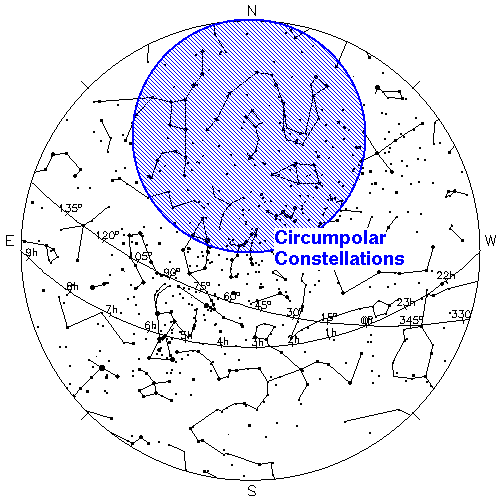
The path that a star takes over a day is a diurnal circle. Diurnal circles are parallel to the celestial equator, and (except for the celestial equator) are small circles.

The red trail is part of the diurnal circle of a star that is north of the celestial equator. Notice that it rose north of due east, crossed the meridian (culminated) between the celestial equator and zenith and is currently in the western sky.
The green trail is part of the diurnal circle of a star that is south of the celestial equator. Notice it rose south of due east and culminated at a much lower altitude than the red star.

Here are a set of equally spaced diurnal circles displayed on the sky map:

Notice that the circles do not appear to be equally spaced: it appears that the spacing is bigger near the horizon. This is a result of the distortion always present when spheres are mapped onto planes. In this sort of projection (stereographic) the map scale changes and the same constellation will be displayed as bigger when near the horizon.
Notice that the diurnal circles near the celestial pole never hit the horizon. The stars near the pole don't set...they just circle the pole once per day. Stars near the pole that don't set are called circumpolar stars. The below displays the circumpolar region for CSB/SJU (about 45° latitude).

The size of the circumpolar region depends on your latitude. If you were to travel to the equator, it would shrink to nothing (as the poles sit exactly on the horizon at the equator). If you were to travel to the North Pole, the circumpolar region would expand to include the entire visible sky: the northern hemisphere of the celestial sphere. (At the North Pole, the celestial pole would be at zenith.)